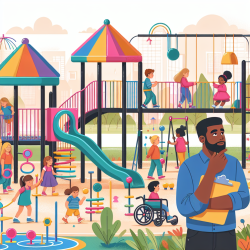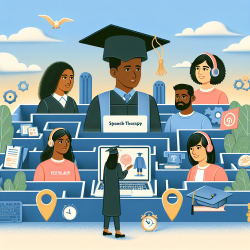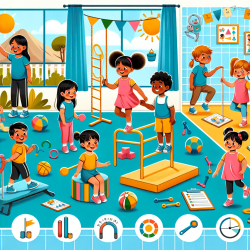Unlock the Secret to Inclusive Playgrounds: What Every Therapist Needs to Know!
As a practitioner working with children with disabilities, you understand the profound impact that play can have on a child's development. However, the reality is that many public playgrounds are not designed to accommodate children with disabilities, limiting their opportunities for play and social interaction. A recent study titled Promoting Health through Accessible Public Playgrounds sheds light on this issue and provides valuable insights for therapists looking to advocate for more inclusive play spaces.
Why Inclusive Playgrounds Matter
Inclusive playgrounds are crucial for the physical, intellectual, emotional, and social development of all children. They provide a space where children with and without disabilities can interact, fostering a sense of community and belonging. Unfortunately, many playgrounds still have physical barriers like sand or woodchip surfaces and lack ramps or accessible equipment, making them inaccessible to children with disabilities.
Key Findings from the Research
The study identified three main areas that influence the design and implementation of inclusive playgrounds:
- Physical Environment: This includes the diversity and accessibility of playground equipment. For instance, equipment should be accessible to children with mobility aids, and the overall design should consider sensory processing disorders.
- Social Environment: Advocacy and awareness are essential. Educating the community about the benefits of inclusive playgrounds and creating opportunities for social play can help change attitudes and promote inclusion.
- Political Environment: Engaging stakeholders, including parents, educators, and policymakers, is crucial for developing policies that support inclusive playgrounds.
How Therapists Can Make a Difference
As a therapist, you can play a pivotal role in advocating for inclusive playgrounds. Here are some actionable steps you can take:
- Advocate for Change: Use your voice to advocate for inclusive playgrounds in your community. Engage with local policymakers and community leaders to push for changes in playground design and policy.
- Educate and Raise Awareness: Educate parents, children, and other stakeholders about the importance of inclusive play. Share success stories and highlight the benefits of inclusive playgrounds for all children.
- Collaborate with Designers: Work with playground designers to ensure that new and existing playgrounds are accessible and inclusive. Provide input on the needs of children with disabilities to help create spaces that are welcoming to all.
Encouraging Further Research
While the study provides a comprehensive overview of the current state of playground accessibility, there is always room for further research. Therapists can contribute by conducting their own studies or collaborating with researchers to explore new ways to make playgrounds more inclusive.
To read the original research paper, please follow this link: Promoting Health through Accessible Public Playgrounds.










